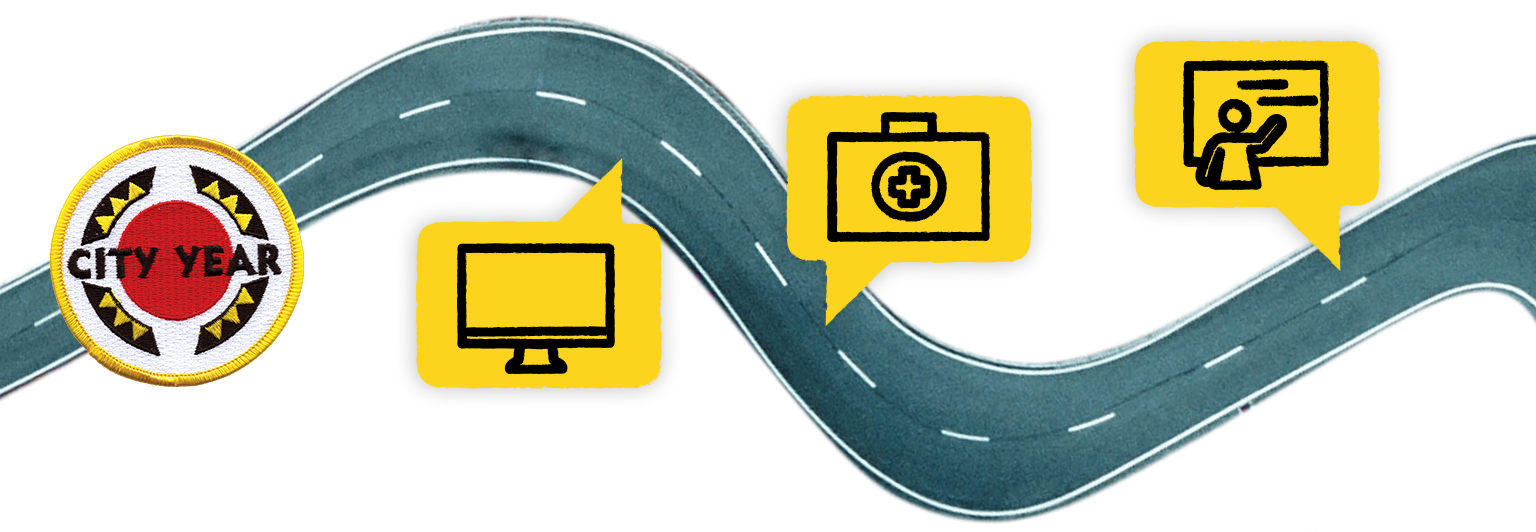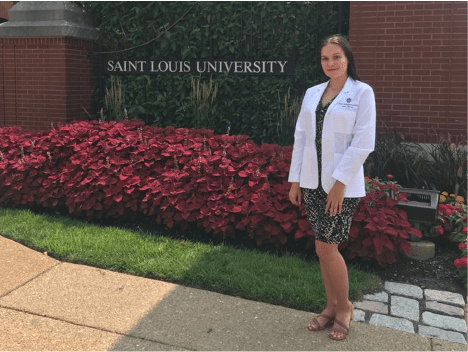City Year can help prepare you for medical school

Valeriya Ragozina had just graduated from University of California, Riverside in June 2020 with hopes of pursuing a career in medicine. However, she knew that from MCATs to admission notification, the application cycle for medical schools in the U.S. takes approximately one year for MD and DO applicants.
So, Valeriya—like many medical school hopefuls—sought out a gap year opportunity. Valeriya knew the best way to spend her time during the medical school application process to commit to a year of serving students in public schools with City Year Seattle.

Now headed into her second year at St. Louis University School of Medicine, we spoke with Valeriya recently about the lessons she learned in during her year of service—and how they helped her prepare for the triumphs and challenges of medical school.
Lesson 1: Build rest into your routine
The risk of burnout can be greater in high-stress fields such as medicine, so being intentional about taking time to rest is an important thing to do.
Like medical school, City Year demands a lot of time, energy, and dedication. AmeriCorps members are at the school before their students arrive and leave well after classes have already ended. They show up—day in and day out—for their students and school communities, supporting equitable learning environments and helping students to achieve their goals. Learning how to manage your life, responsibilities and wellness outside of service is important.
During her City Year experience, Valeriya became disciplined about rest and rejuvenation to make sure she made time to do the things she loved like reading, hiking and watching movies, while also preparing for her medical school admissions interviews.
“It’s important to set limits for yourself because in medical school, you may feel pressure to always be studying,” Valeriya says, “And you will get caught in that never-ending study mode unless you set clear boundaries for yourself.”
Lesson 2: Learn how to become an effective advocate
During a service year with City Year, you are required to rise to the occasion as a leader and mentor in your school and community. AmeriCorps members become advocates for their students, in and out of the classroom. At the same time, they also help students learn the skills they need to advocate for themselves in the future. When Valeriya first started service, taking on this role was new, and she had to grow into it. However, she’s grateful for the experience because it prepared her for the doctor-patient dynamic she would learn more about in medical school.
“In medicine, you have to advocate for your patients, just like you would your students in a City Year,” Valeriya says. “But it’s also important to equip your patients with the information they need so they can make informed decisions about their health. If they’re armed with this information, patients are better able to advocate for themselves whenever they have interactions with medical professionals.”
Lesson 3: Make the most out of relationships with time constraints
Because her service year was 100% remote due to COVID-19 pandemic school shutdowns, the time Valeriya had with her students often seemed fleeting. There were no impromptu run-ins with students during morning greeting, no casual conversation in the hallway in between classes or on the way to lunch. She had to make the best of the limited, virtual time she had with their students to build positive relationships, provide tutoring and mentoring, and help them build key academic and social-emotional skills.
“My City Year experience is similar to real-life medical encounters because they can be very brief. From the moment a patient or student joins you, you must establish a supportive environment that helps build mutual trust and understanding,” Valeriya says.
“You want to make sure the patient feels comfortable with you, like you have their best interest in mind. While medical encounters may be limited in time, they’re extremely personal. City Year helped me learn how to create a trusting and comfortable environment despite time constraints.”
Lesson 4: Be open to new experiences in service and beyond
Learning to adapt and be flexible in challenging, fast-paced environments is a necessary skill for many situations—including serving with City Year. From the start of her service, Valeriya made a commitment to step outside of her comfort zone and try new things. For starters, she moved from to a new state—from California to Washington—just to serve!
“In many ways, you’re also a student because each day you learn something new from your students, teammates, partner teachers and community. My best advice here is to be open to this learning process and new experiences,” Valeriya says.
Lesson 5: Lean into empathy
“As a doctor, we also have to be open to listening to and learning from our patients,” Valeriya says.
“We should not approach our work thinking we always know better or more. The patient knows their body best. We should work alongside our patients to provide holistic support and medical care—which requires a willingness to learn from your patients and the communities you serve.”
Are you looking to make an impact while applying to medical school? Click here to learn more about how you can make a difference while achieving your goals!
Related stories
Every year, thousands of young people decide to join AmeriCorps programs for a year (or more!) of service, helping to...
Read more about Everything you need to know about returning for another year as a City Year AmeriCorps memberCity Year is committed to providing our AmeriCorps members with resources, opportunities and support that help them to achieve their...
Read more about Empowering Futures: City Year Baton Rouge’s Partnership with Bottom LineFatimah Abdulmateen takes service seriously. Fatimah served two years with City Year as an AmeriCorps member, making her an alum...
Read more about A City Year alum with a passion for service—both here and abroadThough this part of the City Year experience may be particularly challenging, it’s also normal! And we want you to...
Read more about The “mid-fall slump” in schools is real--here's what to expect















